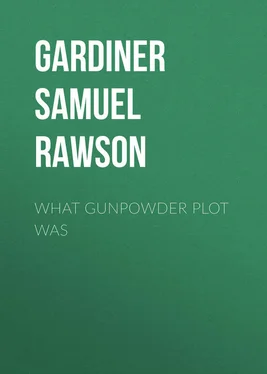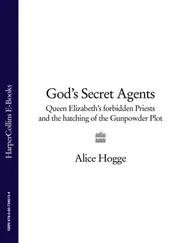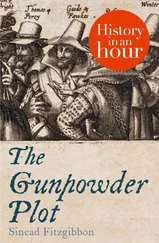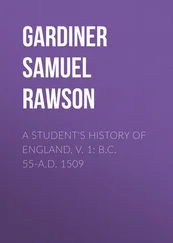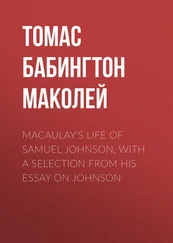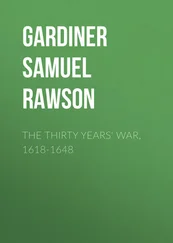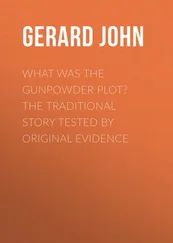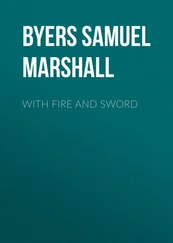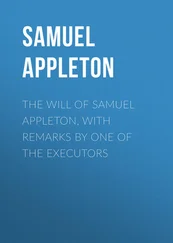Samuel Gardiner - What Gunpowder Plot Was
Здесь есть возможность читать онлайн «Samuel Gardiner - What Gunpowder Plot Was» — ознакомительный отрывок электронной книги совершенно бесплатно, а после прочтения отрывка купить полную версию. В некоторых случаях можно слушать аудио, скачать через торрент в формате fb2 и присутствует краткое содержание. Жанр: foreign_antique, foreign_prose, на английском языке. Описание произведения, (предисловие) а так же отзывы посетителей доступны на портале библиотеки ЛибКат.
- Название:What Gunpowder Plot Was
- Автор:
- Жанр:
- Год:неизвестен
- ISBN:нет данных
- Рейтинг книги:3 / 5. Голосов: 1
-
Избранное:Добавить в избранное
- Отзывы:
-
Ваша оценка:
- 60
- 1
- 2
- 3
- 4
- 5
What Gunpowder Plot Was: краткое содержание, описание и аннотация
Предлагаем к чтению аннотацию, описание, краткое содержание или предисловие (зависит от того, что написал сам автор книги «What Gunpowder Plot Was»). Если вы не нашли необходимую информацию о книге — напишите в комментариях, мы постараемся отыскать её.
What Gunpowder Plot Was — читать онлайн ознакомительный отрывок
Ниже представлен текст книги, разбитый по страницам. Система сохранения места последней прочитанной страницы, позволяет с удобством читать онлайн бесплатно книгу «What Gunpowder Plot Was», без необходимости каждый раз заново искать на чём Вы остановились. Поставьте закладку, и сможете в любой момент перейти на страницу, на которой закончили чтение.
Интервал:
Закладка:
“Your Honours’ most humble to be commanded,
“Rich. Walsh.”
Percy and the two Wrights died of their wounds, so that, in addition to Fawkes, Thomas Winter was the only one of the five original workers in the mine in the hands of the Government. Of the seven others who had been named in Fawkes’s confession of the 9th, Christopher Wright had been killed; Rokewood, Robert Winter, and Grant had been apprehended at Holbeche; Sir Everard Digby, Keyes, and Tresham were subsequently arrested, as was Bates a servant of Catesby.
That for some days the Government made no effort to get further information about the mine and the cellar cannot be absolutely proved, but nothing bearing on the subject has reached us except that, on the 14th, when a copy of Fawkes’s deposition of the 8th was forwarded to Edmondes, the names of the twelve chief conspirators are given, not as Fawkes gave them on the 9th, in two batches, but in three, Robert Winter and Christopher Wright being said to have joined after the first five, whilst Rokewood, Digby, Grant, Tresham, and Keyes are said to have been ‘privy to the practice of the powder but wrought not at the mine.’ 82 82 The question whether Winter or Keyes was one of two workers will be subsequently discussed.
As Keyes is the only one whose Christian name is not given, this list must have been copied from one now in the Record Office, in which this peculiarity is also found, and was probably drawn up on or about the 10th 83 83 Mrs. Everett Green suggests Nov. 8 ( G. P. B. No. 133), but this is merely a deduction from her mistaken date of the examination of the 17th (see p. 17, note 1). In Fawkes’s confession of the 9th Keyes’s Christian name appears to have been subsequently added.
from further information derived from Fawkes when he certified the confession dragged from him on the preceding day. [84] Mrs. Everett Green suggests Nov. 8 ( G. P. B. No. 133), but this is merely a deduction from her mistaken date of the examination of the 17th (see p. 17, note 1). In Fawkes’s confession of the 9th Keyes’s Christian name appears to have been subsequently added.
What really seems to have been at this time on the minds of the investigators was the relationship of the Catholic noblemen to the plot. On the 11th Talbot of Grafton was sent for. On the 15th Lords Montague and Mordaunt were imprisoned in the Tower. On the 16th Mrs. Vaux and the wives of ten of the conspirators were committed to various aldermen and merchants of London. 84 84 Extracts from the Council Registers, Add. MSS. 11,402, fol. 108. The volume of the Council Book itself which recorded the transactions of these years has been lost.
When Fawkes was re-examined on the 16th, 85 85 G. P. B. No. 101. There is a facsimile in National MSS. Part iv. No. 8.
by far the larger part of the answers elicited refer to the hints given, or supposed to have been given, to Catholic noblemen to absent themselves from Parliament on the 5th. Then comes a statement about Percy buying a watch for Fawkes on the night of the 4th and sending it ‘to him by Keyes at ten of the clock at night, because he should know how the time went away.’ The last paragraph alone bears upon the project itself. “He also saith he did not intend to set fire to the train [until] the King was come to the House, and then he purposed to do it with a piece of touchwood and with a match also, which were about him when he was apprehended on the 4th day of November at 11 of the clock at night that the powder might more surely take fire a quarter of an hour after.”
The words printed in italics are an interlineation in Coke’s hand. They evidently add nothing of the slightest importance to the evidence, and cannot have been inserted with any design to prejudice the prisoner or to carry conviction in quarters in which disbelief might be supposed to exist. Is not the simple explanation sufficient, that when the evidence was read over to the examinee, he added, either of his own motion or on further question, this additional information. If this explanation is accepted here, may it not also be accepted for other interlineations, such as that relating to the cellar in the first examination? 86 86 See pp. 18, 20.
That the examiners at this stage of the proceedings should not be eager to ask further questions about the cellar and the mine was the most natural thing in the world. They knew already quite enough from Fawkes’s earlier examinations to put them in possession of the general features of the plot, and to them it was of far greater interest to trace out its ramifications, and to discover whether a guilty knowledge of it could be brought home either to noblemen or to priests, than to attain to a descriptive knowledge of its details, which would be dear to the heart of the newspaper correspondent of the present day. Yet, after all, even in 1605, the public had to be taken into account. There must be an open trial, and the more detailed the information that could be got the more verisimilitude would be given to the story told. It is probably, in part at least, to these considerations, as well as to some natural curiosity on the part of the Commissioners themselves, that we owe the examinations of Fawkes on the 17th and of Winter on the 23rd.
“Amongst all the confessions and ‘voluntary declarations’ extracted from the conspirators,” writes Father Gerard, “there are two of exceptional importance, as having furnished the basis of the story told by the Government, and ever since generally accepted. These are a long declaration made by Thomas Winter, and another by Guy Fawkes, which alone were made public, being printed in the ‘King’s Book,’ and from which are gathered the essential particulars of the story, as we are accustomed to hear it.”
If Father Gerard merely means that the story published by the Government rested on these two confessions, and that the Government publications were the source of all knowledge about the plot till the Record Office was thrown open, in comparatively recent years, he says what is perfectly true, and, it may be added, quite irrelevant. If he means that our knowledge at the present day rests on these two documents, he is, as I hope I have already shown, mistaken. With the first five examinations of Fawkes in our hands, all the essential points of the conspiracy, except the names, are revealed to us. The names are given in the examination under torture, and a day or two later the Government was able to classify these names, though we are unable to specify the source from which it drew its information. If both the declarations to which Father Gerard refers had been absolutely destroyed we should have missed some picturesque details, which assist us somewhat in understanding what took place; but we should have been able to set forth the main features of the plot precisely as we do now.
Nevertheless, as we do gain some additional information from these documents, let us examine whether there are such symptoms of foul play as Father Gerard thinks he can descry. Taking first Fawkes’s declaration of November 17, it will be well to follow Father Gerard’s argument. He brings into collocation three documents: first the interrogatories prepared by Coke after the examination of the 7th, then the examination of the 8th, which he calls a draft, and then the full declaration of the 17th, which undoubtedly bears the signature of Fawkes himself.
That the three documents are very closely connected is undeniable. Take, for instance, a paragraph to which Father Gerard not unnaturally draws attention, in which the repetition of the words ‘the same day’ proves at least partial identity of origin between Coke’s interrogatories and the examination founded on them on the 8th. 87 87 Gerard , p. 174.
Интервал:
Закладка:
Похожие книги на «What Gunpowder Plot Was»
Представляем Вашему вниманию похожие книги на «What Gunpowder Plot Was» списком для выбора. Мы отобрали схожую по названию и смыслу литературу в надежде предоставить читателям больше вариантов отыскать новые, интересные, ещё непрочитанные произведения.
Обсуждение, отзывы о книге «What Gunpowder Plot Was» и просто собственные мнения читателей. Оставьте ваши комментарии, напишите, что Вы думаете о произведении, его смысле или главных героях. Укажите что конкретно понравилось, а что нет, и почему Вы так считаете.
